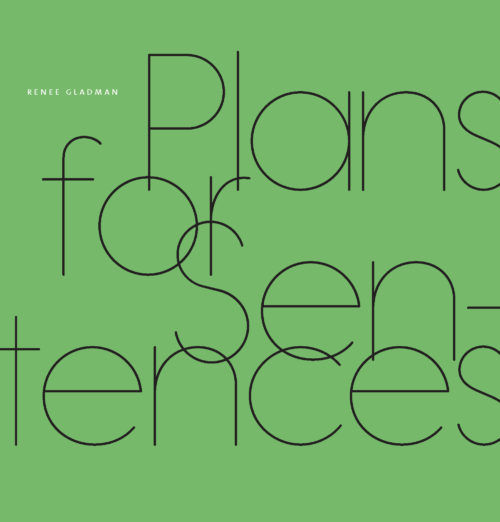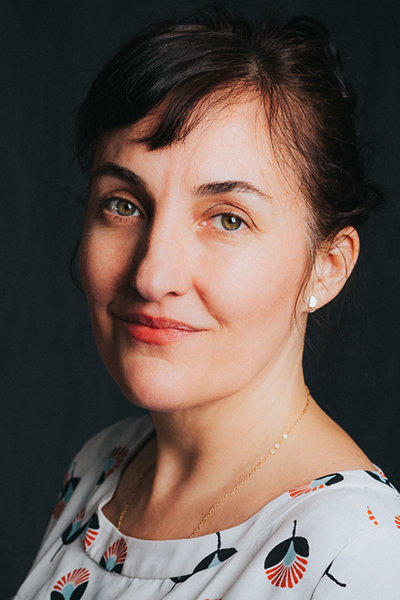“We who draw do so not only to make something observed visible to others, but also to accompany something invisible to its incalculable destination.”
—John Berger
I don’t really draw, but I am interested in drawing, and in the potential relationship between visual images—especially drawings—and writing. Drawing and poetry both require a certain kind of visual and spatial imagination, and both often work with a “line.” I’m intrigued by pairings of image and text that resonate from a relationship charged by mystery or instability, a charge that requires the participation of the reader-viewer, and Plans for Sentences, by Renee Gladman, a collection of sixty drawings, accompanied, on the facing page, by a corresponding set of “descriptions for future sentences” (themselves also sentences) recently expanded my idea of how an image-text pairings could work.
Gladman has previously published numerous poetry collections, a cycle of speculative novels centered in the invented city-state of Ravicka, and, recently, two other collections of drawings, Prose Architectures and One Long Black Sentence (indexed by Fred Moten), working in these many modes to explore questions about, among other things, the relationships between line and language, gesture and form, space and action. In the notes of Plans for Sentences, her most recent volume, Gladman writes, “For a long time, I hadn’t wanted legible, narrative language anywhere near my drawings. I felt that no matter how I arranged them, one or the other (i.e. the text or the drawing) would fall into the category of illustration.”
But here, the images and writing have an intriguingly porous relationship. The drawings are wondrous and architectural, sometimes evoking chimerical cities, and other times inscribing a landscape with dense structures and with weather, in the case of the later images in the collection, where Gladman adds a wash of color to the ink drawings. Parts of the images are formed with a tight illegible (or hauntingly almost-legible) script, as if the “sentences” are there, bunched up and nascent in their “plans.” In this way, writing penetrates the drawing.
There’s a common notion that drawing must exist in space, and can be apprehended somewhat simultaneously, whereas writing, because we experience it in a linear fashion, is time-based, and must be apprehended in a certain order. By shaping the drawings with a quasi-writing, and contextualizing the sentences as “plans” for other, future sentences (which will themselves, “in the future,” be in motion, altering the spaces envisioned in the drawings), Gladman has complicated, and at least partially upended that duality of space-based versus time-based work.
The words that come to mind when I think of this work are “vision” and “dimension,” and in “Fig. 55,” a structure the approximate shape of a barn stands above a block of almost-text. In the text, we learn that the sentences will “leak their histories” and “build an essay under the floor and have math be the ghosts.” Each of these gestures has a plausible analogue in the drawing, including the squiggles that could represent the ghosts, like fragments of an equation left on a chalkboard. In the last paragraph, the sentences envision something not yet represented in the image: “The sentences will be on fire by the time the dream arrives and will not want the dream. . .” The pathos in these lines might bring up different associations for different readers. For me, there’s pathos somehow “leaking” from these sentences, calling to mind the ways we build or fail to build communities, shelters, and habitable spaces. Taken together, the text and images here dream and draft and gesture toward future creations, lines of many kinds that will create, inhabit, and alter future spaces.




